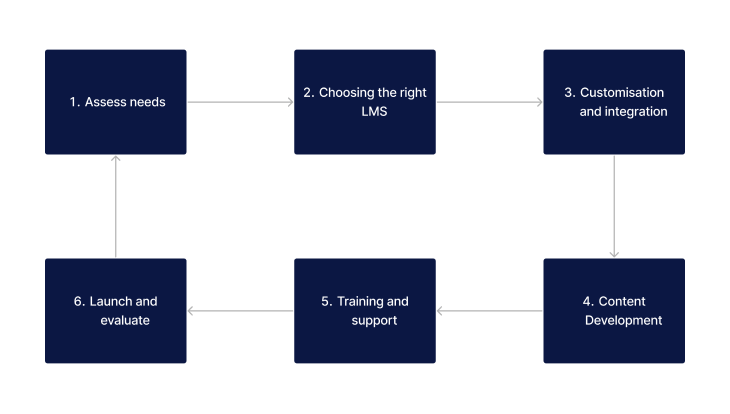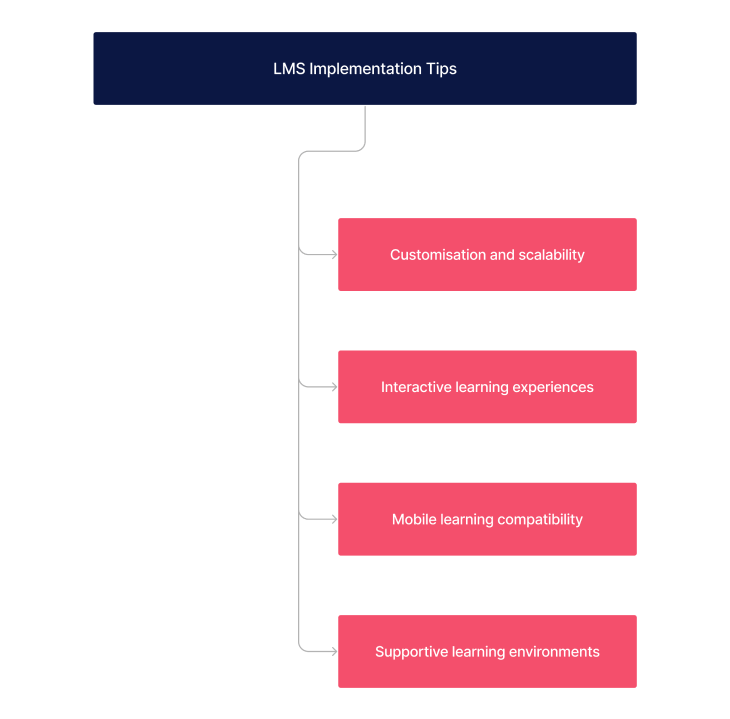What is a Learning Management System in Healthcare Education?
A learning management system (LMS) in healthcare education is a digital platform designed to facilitate the management, delivery, and tracking of healthcare education programs. It supports care worker training, supports worker education, and enhances the learning experience of healthcare professionals through online courses, learning modules, and discussion forums within a structured learning environment. This digital solution is pivotal in ensuring that healthcare professionals have continuous access to essential training and resources, thereby keeping abreast of the latest medical practices and regulations.
Why Use Learning Management Systems in Healthcare Education?
Utilising LMS systems in healthcare education offers numerous benefits, including the facilitation of accessible and flexible online training, the standardisation of education programs, and the provision of a user-friendly interface for both instructors and learners. These systems support mobile learning and can integrate various learning resources, making health education more engaging and effective. Additionally, LMS platforms enable tracking and assessment of individual learner progress, thereby ensuring compliance with healthcare standards and improving the overall quality of care provided.
How to Implement a Learning Management System in Healthcare Education
Implementing an LMS requires careful planning and consideration of the specific needs of healthcare education. It involves selecting appropriate LMS software, ensuring the platform is cloud-based for ease of access, and customising the learning environment to support the unique requirements of healthcare professionals.
Effective implementation also involves stakeholder engagement, from educators to IT specialists, ensuring that the system is not only technically sound but also pedagogically effective and aligned with healthcare educational goals.
Steps to Implement a Learning Management System

Before diving into the specific steps required for implementing an LMS, it's essential to understand the importance of each phase in the process. From assessment to launch, each step plays a crucial role in ensuring the LMS meets the educational needs and objectives of healthcare training programs.
- Assessment of Needs: Identify the specific needs of your healthcare education programs, including care worker training and support worker education. Understanding these needs in detail is crucial for selecting an LMS that can accommodate various types of learning content, from theoretical knowledge to practical skills.
- Choosing the Right LMS: Select an LMS that offers a user-friendly interface, is mobile learning compatible, and supports the types of online learning modules and courses you plan to offer. It's important to consider factors such as scalability, security, and the ability to integrate with other systems.
- Customisation and Integration: Customise the learning platform to meet your educational goals and integrate it with existing systems for seamless management. Customisation can include branding, specific learning pathways, and the integration of multimedia resources to enhance learning experiences.
- Content Development: Develop engaging and factual online courses and learning modules tailored to healthcare professionals. The content should be developed by subject matter experts to ensure accuracy and relevance to current healthcare practices.
- Training and Support: Provide training for educators on how to use the LMS effectively and set up support services for users. Ongoing support and training ensure that both learners and educators can navigate and utilise the LMS to its full potential.
- Launch and Evaluation: Launch the LMS, monitor its usage, and evaluate its impact on learning outcomes to make continuous improvements. This step is critical for understanding the effectiveness of the LMS in meeting educational objectives and identifying areas for enhancement.
Tips for Implementing a Learning Management System for Healthcare Education

Implementing an LMS in healthcare education comes with its unique set of challenges and opportunities. Here are some tips to ensure a smooth and effective implementation process, drawing from best practices and common pitfalls to avoid.
- Customisation and scalability: Opt for open source LMS software when possible to allow for customisation and scalability. Open source platforms can offer flexibility and cost savings, especially for large-scale implementations.
- Interactive learning experiences: Ensure the platform supports discussion forums and interactive learning experiences to engage learners. Interactive elements can significantly enhance the learning experience by encouraging collaboration and communication among students.
- Mobile learning compatibility: Consider the importance of mobile learning compatibility to accommodate the busy schedules of healthcare professionals. Mobile access enables learners to access materials anytime, anywhere, which is essential for continuous learning and development.
- Supportive learning environments: Focus on creating a supportive learning environment that is accessible to all learners, including those with disabilities. Accessibility is key to inclusive education and ensures that all healthcare professionals can benefit from the training provided.
Need a new healthcare LMS?
Contact Ausmed today and see how we can support your organisation!
Related Resources
- Mandatory Training: How an LMS can help you meet requirements
- LMS in Healthcare: The Roles, Benefits and Pros and Cons
- LMS in Disability Care: The Roles, Benefits and Pros and Cons
- What Is the Role of an LMS in Aged Care?
- What Are Learning Analytics?
- How to Create a Culture of Continuous Learning
- Guide to Compliance Training (for Healthcare Managers)
- Guide to Building a Competency Framework for Skill Development
- How to Manage an Effective Staff Training Program
- Identifying Skills Gaps with Learning Analytics
- How Do I Use Learning Analytics for Competency Mapping?
- A Guide to Personalised Learning in Healthcare
Conclusion
Implementing a learning management system in healthcare education can significantly enhance the learning and development of healthcare professionals. By following the outlined steps and tips, education and learning and development managers can ensure a successful implementation. This will not only streamline care worker training and support worker education but also foster a more efficient, engaging, and comprehensive learning experience. Ultimately, a well-implemented LMS will contribute to the improvement of healthcare services by ensuring that professionals are well-trained and up-to-date with their skills and knowledge.
References
- Turnbull, D., Chugh, R., Luck, J. (2020). Learning Management Systems, An Overview. In: Tatnall, A. (eds) Encyclopedia of Education and Information Technologies. Springer, Cham. https://doi.org/10.1007/978-3-030-10576-1_248
- Watson, W., Watson, SL., (2007). An Argument for Clarity: What are Learning Management Systems, What are They Not, and What Should They Become. In: TechTrends. Vol 51. http://cardinalscholar.bsu.edu/handle/20.500.14291/194513
- Oliveira, P.C.D., Cunha, C.J.C.D.A. and Nakayama, M.K., 2016. Learning Management Systems (LMS) and e-learning management: an integrative review and research agenda. JISTEM-Journal of Information Systems and Technology Management, 13, pp.157-180.



